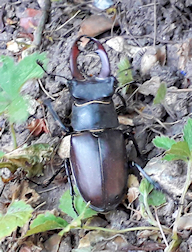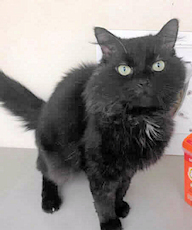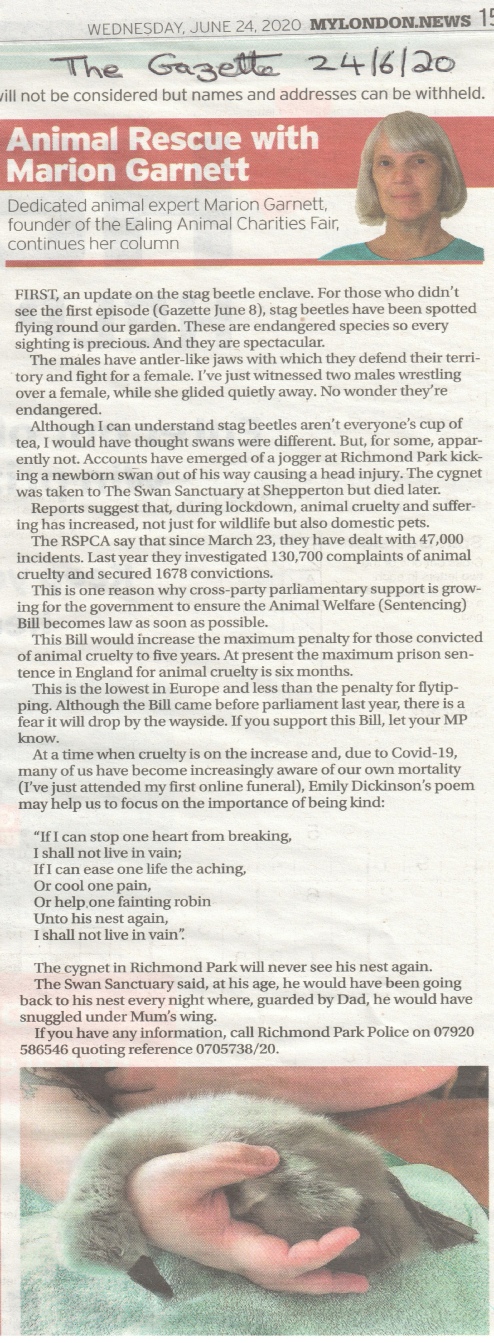






Although the information given here is, to the best of the organiser’s knowledge and belief,
correct, the organiser reserves the right to make alterations and amendments, as necessary.
As well as founding the Ealing Animal Charities Fair, Marion Garnett has also, since 2011, written a weekly Animal Rescue column which is published in the West London local newspaper, The Gazette. Columns published since January 2019 are now available online here.
If you would like to see any of the columns published before 2019, please contact Marion directly (see the Contacts page).
Column 1 June 2020
“A real counter surfer who will hoover up any food in sight” – seems to me this description
could apply to many of us during lockdown. But, it was written about Bally who is
currently waiting, with Dogs Trust, for a new home. This ex- has
probably never lived in a home before and will need to learn the basics such as when
food is on the table, it’s not self-
has
probably never lived in a home before and will need to learn the basics such as when
food is on the table, it’s not self-
For those interested in adopting Bally, the good news is that Dogs Trust are trialling a rehoming service, called Handover at Home. This process involves prospective owners contacting Dogs Trust to find out more about a dog and complete a questionnaire. Dogs Trust then arrange a virtual meeting. If it’s thought there is a match, Dogs Trust brings the dog to you, adhering to social distancing guidelines. If everyone is happy, the dog is left in its new home. The new owner pays the rehoming fee and the dog is signed over. Dogs Trust continue to provide advice, if needed. If you want to know more about Bally and the scheme, see dogstrust.org.uk.
At least when Dogs Trust take the dog on its exciting journey to its potential new
home, we know it will be safe -
If we see a distressed dog in a hot car, the RSPCA advise us to call 999. If the dog is outside a shop, we could ask the shop to make an announcement for the car owner. If the situation becomes critical and the police are too far away, many people’s instinct will be to break into the car to free the dog. If we decide to do this, we need to be aware that, without proper justification, this could be classed as criminal damage and we may need to defend our actions in court. We must make sure we tell the police what we intend to do, why and take images of the dog and the names and numbers of witnesses.
It’s important to remember that places such as conservatories and caravans can get hot very quickly too.
Column 8 June 2020
Something was buzzing through the air, and it wasn’t a drone. That was the previous
evening. This was 5-
Before I tell you what it is -
His journey will have begun up to 6 years ago when, in June, his Mum burrowed into the ground, near some rotting wood, to lay her eggs. After 3 weeks, as a tiny larva he nibbled his way out of the egg to begin his long journey to beetlehood (clue). For around 5 years he remained underground, as larva, moving between the rotting wood and the soil until he eventually transformed into a pupa and emerged onto the soil surface around May this year as a magnificent male stag beetle. But his glory doesn’t last long. By the time you read this, he may have already died.
He spends his few weeks as a mature beetle, flying round his territory, mating and fighting off challengers. Last night, I also saw a female. In contrast, although she can fly, she spends most of her time walking around and mating. Her final act is to make her way to the place from which she emerged where she buries herself into the ground to lay her eggs, starting the cycle all over again before she, also, dies.
These wonderful creatures are declining in the UK and are classed as a “priority species”. Reasons for their decline include habitat loss caused by, for example,
tidying gardens and removing decaying wood which is food for stag beetle larvae.
They can also be attracted to warm surfaces such as pavements where they are crushed.
If we find a stag beetle, we should leave it where it is, unless it’s in danger.
If we need to move it for its own safety, we need to move it as short a distance
as possible. Other ways to help ensure their survival include gardening in a wildlife-
species”. Reasons for their decline include habitat loss caused by, for example,
tidying gardens and removing decaying wood which is food for stag beetle larvae.
They can also be attracted to warm surfaces such as pavements where they are crushed.
If we find a stag beetle, we should leave it where it is, unless it’s in danger.
If we need to move it for its own safety, we need to move it as short a distance
as possible. Other ways to help ensure their survival include gardening in a wildlife-
Column 15 June 2020
Can you remember what you were doing four years ago? I certainly wouldn’t think you were concerned about social distancing and whether or not you could risk going to the shops. We’ve come a long way since then. And Chunky Chops has come a long way too.
Four years ago, I visited the RSPCA Southall Cat Adoption Centre and can remember writing about Chunky Chops. He had watched me closely for the whole time I was stood outside his pod making a few notes on how he came to be there. And, sad notes they were too. Originally, he had a home but his owner died. From September 2015 until February 2016, Chunky Chops lived outside his old home, unable to get in, getting what food he could from locals. It wasn’t until he developed an infected wound on his head that he was taken into the care of the RSPCA.
The reason I’m telling you this, is because, quite unexpectedly, I recently received a message from his new owner to let me know that, four years ago, after seeing the column, she went to the Adoption Centre and adopted him and it was now the fourth anniversary of his arrival. And, what a happy life they have had together for the past four years. Renamed Rodney, he lives in the country and is very loving. As she wrote to me, he was asleep on the bed.
 Hopefully, a similar happy life is in store for Stocky, one of the Adoption Centre’s
current residents. The Manager of the Centre, Bev Leavy, says Stocky is obsessed
with food. Possibly because he was a stray and knows what it’s like to be hungry.
He’s a loving boy who wants to be around people. He’s best suited for a home with
older children and no other pets. Because of the Covid-
Hopefully, a similar happy life is in store for Stocky, one of the Adoption Centre’s
current residents. The Manager of the Centre, Bev Leavy, says Stocky is obsessed
with food. Possibly because he was a stray and knows what it’s like to be hungry.
He’s a loving boy who wants to be around people. He’s best suited for a home with
older children and no other pets. Because of the Covid-
In order to guard against our pets experiencing what Chunky Chops went through when he was shut outside his home for several months, don’t forget the RSPCA have a Home for Life scheme whereby if your pet outlives you, the RSPCA will care for them and do all they can to find them a new home. For scheme details including how to join, see rspca.org.uk.
June 2020

| Groups 2025 |
| Map |
| Car parking |
| Subject Index |